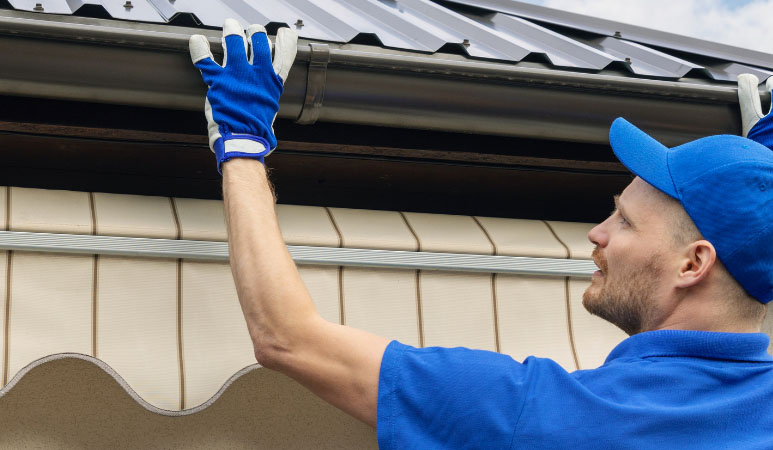Metal roofs are highly susceptible to leaks and damage during heavy rains, and gutters can help to redirect the flow of water away from the roof. Gutters can be very beneficial for homes with metal roofs. Installing gutters on a metal roof is a relatively simple process; the most important thing is to ensure that the gutters are properly secured so they will not become detached during a storm.
1. Choosing the Right Gutter System
There are a few things to consider when choosing a gutter system for a metal roof. First, you need to decide whether you want seamless or sectional gutters. Seamless gutters are custom-made on-site and are less likely to leak than sectional gutters. However, they are more expensive and can be more difficult to install. Sectional gutters are cheaper and easier to install but more likely to leak. Gutter installation Florida companies should be able to guide you on the right gutter.
2. Attaching the Gutters to the Roof
Once you’ve chosen the right gutter system, you need to attach it to the roof. You can do this by following these steps. For best results, be sure to engage gutter installation experts.
Begin by measuring the length of your roofline. You will need to purchase enough gutters to cover this length, plus an additional 10 percent to allow for cuts and errors. Next, cut your gutters to size using a hacksaw or power saw. Make sure to wear gloves and eye protection when cutting the gutters. Once the gutters are cut, it’s time to install the hangers. Space the hangers evenly along the length of the gutters, being sure to drive them into the gutter and the roofline. If you are planning a gutter installation in Florida, Grace Roofing & Sheet Metal in South Florida are experts in installing and repairing gutters.
3. Installing the Downspouts
Downspouts should be positioned away from foundation walls to minimize basement flooding risks. Again, use sealant or caulking around each downspout opening to create a watertight seal. Gutters are essential to protecting your home, so make sure you have them installed by a qualified professional. This will ensure they also offer roofing maintenance services when needed.
4. Connecting the Gutters to the Downspouts
Once the downspouts are installed, you need to connect them to the gutters. Make sure to use the proper length and gauge for the metal roof. Once the gutters are attached, you can attach the downspouts using brackets, nails, or screws.
5. Testing the Gutters
After you have installed your gutters, gutter installation experts say that it is important to test them to ensure that they are properly draining water away from your home. To do this, use a hose to run water over the gutter and down the downspout. If the gutters are installed correctly, the water should flow smoothly and not leak or overflow. By engaging companies offering roofing maintenance services, you can be sure gutters are properly fixed.
If you notice any leaking or overflowing, there is likely a problem with the installation, and you will need to adjust the gutters accordingly. By taking the time to test your gutters, you can be sure that they will be able to protect your home from water damage effectively.
Conclusion
While metal roofs are known for their durability and longevity, they can still be susceptible to damage from severe weather conditions. One way to help protect your metal roof is by installing gutters. Gutters help to redirect rainwater away from the roof, preventing it from pooling and causing leaks. As a result, installing gutters on a metal roof can help to prolong its lifespan and keep it looking its best for years to come. Grace Roofing & Sheet Metal in South Florida has over ten years of experience in roof installation and repair, roof coatings, and roof cleaning. Contact us today for more information.

